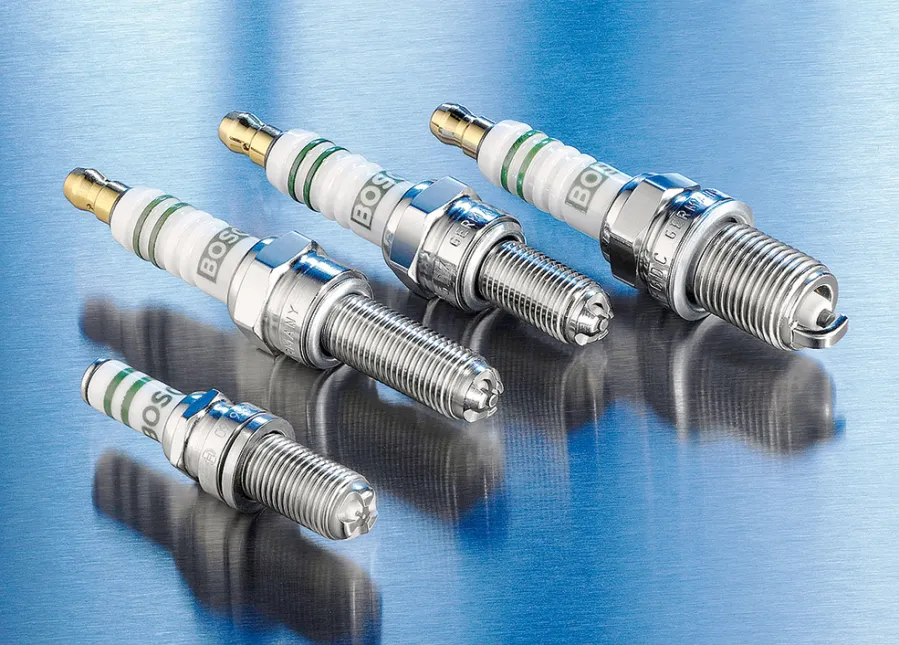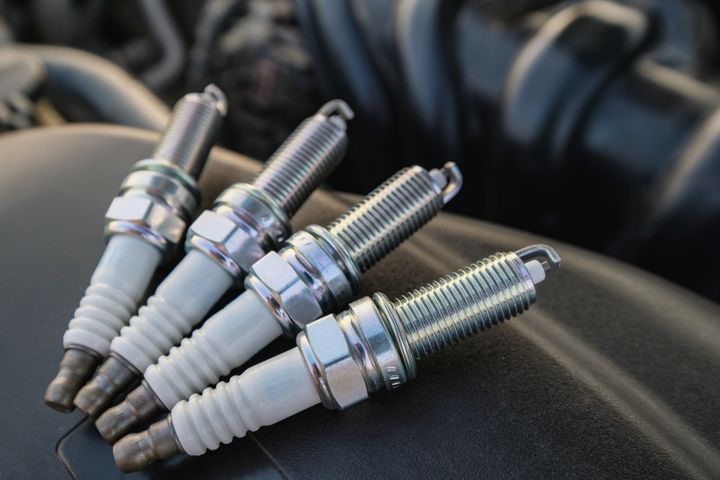


Spark plugs are essential components that play a crucial role in the operation of gasoline-powered internal combustion engines. They are responsible for igniting the air-fuel mixture within the engine's combustion chamber, initiating the combustion process that powers the vehicle. This article will provide an in-depth exploration of spark plugs, covering their working principles, types, maintenance requirements, benefits, and the latest advancements in spark plug technology.

Spark plugs are small yet indispensable components that ensure the proper ignition and combustion of the air-fuel mixture in gasoline engines. Without them, the engine would be unable to generate the power necessary to propel the vehicle. This introduction will provide an overview of the significance of spark plugs and their impact on engine performance, fuel efficiency, and emissions.
Spark plugs are designed to generate a high-voltage electrical spark that ignites the air-fuel mixture within the engine's combustion chamber. This section will delve into the components of a spark plug, the spark generation process, and the significance of the electrode gap.
A spark plug consists of several key components:
| Component | Description |
|---|---|
| Shell | The outer metal casing that protects the internal components. |
| Insulator | A ceramic or other insulating material that separates the central electrode from the shell. |
| Central Electrode | The electrode connected to the ignition system, acting as the cathode from which electrons are ejected. |
| Side Electrode (Ground Strap) | The electrode serving as the anode, typically made of high-nickel steel. |
The spark generation process involves the following steps:
The ignition system supplies high-voltage electricity (typically 40-100 kV) to the spark plug's central electrode.
The sharp tip of the central electrode increases the electrical field strength, facilitating electron emission.
A spark jumps across the gap between the central and side electrodes, igniting the air-fuel mixture.
The distance between the electrodes, known as the spark plug gap, is a crucial factor in the plug's performance. Typical gap sizes range from 0.6 to 1.8 mm, with modern engines often using larger gaps than older models. A properly gapped spark plug ensures efficient combustion and optimal engine performance.
Several types of spark plugs are available in the market, each offering unique benefits and characteristics:
Copper Spark Plugs
Most common and affordable option
Nickel-alloy outer material and copper core
Shorter lifespan due to electrode wear and fouling
Platinum Spark Plugs
Higher melting point and hardness than copper
Extended service life and better heat handling
Available in single and double platinum varieties
Iridium Spark Plugs
Superior hardness and melting point compared to platinum
Thin wire center electrode for improved conductivity and firing efficiency
Longest service life among conventional spark plugs
Pulstar Spark Plugs
Plasma-assisted combustion technology
Ultra-high intensity electrical discharge at the gap
Aims to improve combustion timing, fuel efficiency, and emissions reduction
The choice of spark plug type depends on factors such as engine design, driving conditions, and fuel type. Higher-quality plugs like platinum and iridium offer extended service life and improved performance but come at a higher cost.
Regular spark plug maintenance and replacement are crucial for optimal engine performance, fuel efficiency, and emissions control. This section will cover the signs of worn or fouled spark plugs, recommended replacement intervals, and the proper procedure for spark plug replacement.
Fouled or worn-out spark plugs can cause various issues, including:
Engine misfiring
Rough idling
Decreased fuel economy
Difficulty starting the engine
Visible electrode wear or fouling when inspecting the plugs
Most manufacturers recommend replacing spark plugs every 30,000 to 100,000 miles, depending on the vehicle and driving conditions. However, it's essential to follow the specific recommendations in your owner's manual.
Replacing spark plugs is a relatively straightforward task that can be performed by most DIY enthusiasts. It involves the following steps:
Remove the old spark plugs.
Inspect and adjust the gap on the new spark plugs.
Carefully install the new spark plugs using the correct torque specifications.
Proper gapping and torquing are crucial to ensure optimal performance and prevent damage.
Using high-quality spark plugs, such as platinum or iridium varieties, can offer several benefits:
| Benefit | Description |
|---|---|
| Improved Fuel Efficiency | More efficient combustion leads to better fuel economy. |
| Reduced Emissions | Cleaner combustion and lower environmental impact. |
| Smoother Engine Operation | Better performance and reduced risk of misfiring. |
| Extended Service Life | Reduced maintenance costs over the long term. |
| Increased Reliability | Lower risk of engine damage or failure. |
While more expensive upfront, investing in high-quality spark plugs can potentially save money in the long run through improved fuel economy and reduced maintenance costs.
Spark plug technology continues to evolve, with companies introducing innovative solutions to improve engine efficiency, reduce emissions, and enhance overall performance.

Plasma-Assisted Combustion (Pulstar)
Generates an ultra-high intensity electrical discharge at the gap
Aims to improve combustion timing and efficiency
Potential for increased fuel economy and reduced emissions
Electrode Material Innovations
Advancements in materials like iridium alloys
Improved durability and wear resistance
Longer service life and better performance
Emissions Reduction Technologies
Developments aimed at further reducing emissions from gasoline engines
Contributing to a cleaner environment
As emissions regulations become more stringent, spark plug manufacturers are developing technologies specifically aimed at further reducing emissions from gasoline engines, contributing to a cleaner environment.
Spark plugs are essential components that play a vital role in the operation of gasoline-powered internal combustion engines. By understanding their working principles, types, maintenance requirements, and the benefits of using high-quality spark plugs, vehicle owners can optimize engine performance, fuel efficiency, and overall reliability.
As technology continues to advance, innovations in spark plug design and materials will further enhance combustion efficiency, reduce emissions, and contribute to a more sustainable automotive industry. Staying informed about the latest advancements in spark plug technology can help vehicle owners make informed decisions and ensure their vehicles operate at peak performance while minimizing their environmental impact.
Spark plug fouling can occur due to excessive carbon buildup or the presence of fuel additives and oil deposits. It can lead to misfiring and decreased engine performance.
Remove the spark plugs and visually inspect them for signs of wear, such as eroded electrodes, excessive deposits, or cracks in the insulator.
While it is possible to clean and reuse spark plugs in some cases, it is generally recommended to replace them according to the manufacturer's guidelines for optimal performance.
The spark plug gap is the distance between the electrodes, and it plays a crucial role in ensuring efficient combustion and optimal engine performance.
The recommended replacement interval varies depending on the vehicle make, model, and driving conditions, but typically ranges from 30,000 to 100,000 miles.
Yes, using the wrong type of spark plugs or incorrect heat range can lead to engine damage, misfiring, and decreased performance.
Iridium spark plugs offer superior durability, longer service life, improved conductivity, and better firing efficiency compared to conventional copper or platinum plugs.
Plasma-assisted combustion spark plugs generate an ultra-high intensity electrical discharge at the gap, aiming to improve combustion timing, efficiency, and reduce emissions.
Yes, worn or fouled spark plugs can negatively impact fuel economy due to inefficient combustion and increased emissions.
The correct torque specification varies depending on the vehicle make and model, so it's essential to follow the manufacturer's recommendations to avoid damage.

Sarah isn't your average gearhead. With a double major in Mechanical Engineering and Automotive Technology, she dived straight into the world of car repair. After 15 years of turning wrenches at dealerships and independent shops, Sarah joined MICDOT to share her expertise and passion for making cars run like new. Her in-depth knowledge and knack for explaining complex issues in simple terms make her a valuable asset to our team.











